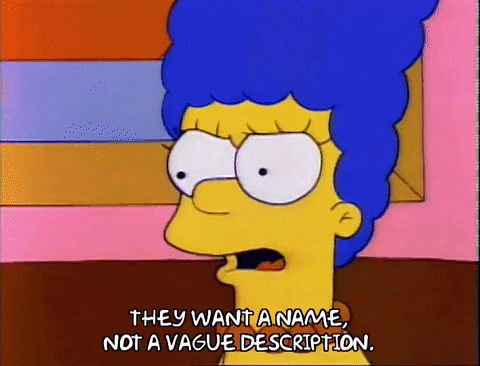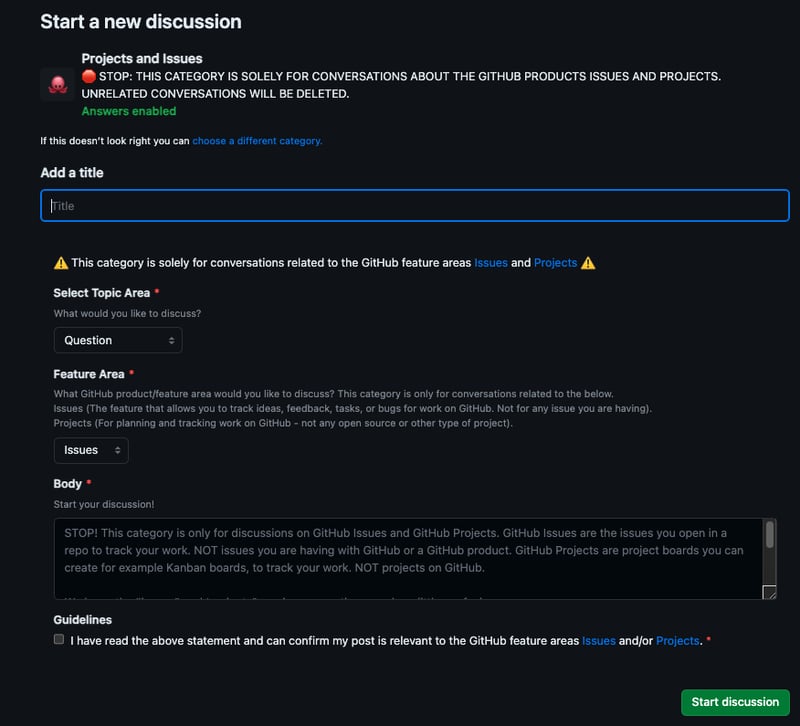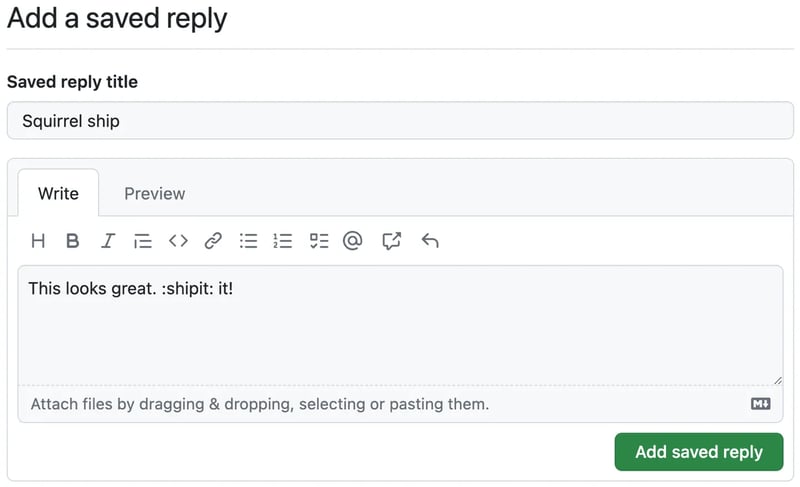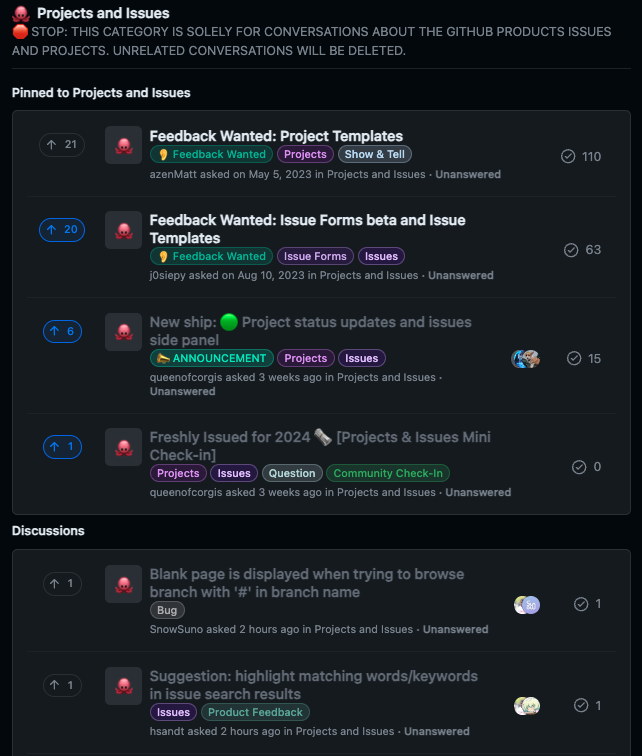When building a community it is important to design with your members in mind. However, even the best laid plans may not have the intended effects. Something we experience while building GitHub’s Community Discussions is miscategorized posts. Miscategorized posts are like putting your kitchen gadgets in your neighbor’s garage—it makes it harder find the thing you need — plus someone has to clean it all up 🧹.
What is a miscategorized post?
A post about a topic in a category that may not be relevant, nor the best fit for that topic (i.e. requesting a new profile achievement in the repositories category).
Why are they a problem?
Hubbers—people who work at GitHub—subject matter experts, and community members may gravitate to their domain, and therefore completely miss a post that interests them if it goes into the wrong category. This leads to the original poster (OP) feeling ignored; they may not get help, or their feedback may be skipped, thus souring their experience. It is no picnic for the community manager or maintainer either. Someone has to move their post and their data may get skewed if there is a large influx of miscategorized posts 😡.
This was a really big problem for the Projects and Issues category. This category once saw 78% of posts in one week be improperly categorized. Thanks to dedicated efforts, and the tools we had at our disposal, we were able to reduce that to an average of 19%. This average is still trending downwards 🎉.
Do you have a category in your Discussions that is plagued by miscategorized posts? Read on to see how we cleaned up and made a better community for everyone 🙏.
Naming
Shakespeare said “What's in a name? That which we call a rose by any other name would smell just as sweet.” The same does not apply to naming your community category. Naming is what helps us differentiate one thing from another.
When deciding a name for the Projects and Issues category we originally chose Issues, but that led to folks reporting any type of issue, from console log errors, to their new TV not connecting. We thought things would get better with Issues and Projects, but that resulted in folks sharing their (albeit awesome) projects in the category. We sat down and thought further on how to solve this. We realized we now had another problem: users wanted to share their projects, but didn’t have a dedicated space to do so.
Luckily, this added a datapoint to usher in our Programming Help category, which gave users a space to share their projects and ask for help. A community is like a living organism, and should evolve to meet their members’ needs 🧬.
With the new category added, we tried one more rename to clear up our category’s intention: Projects and Issues—the name you see today. In the month following we saw a 14% reduction in miscategorized posts.
Category Forms
With category forms, you can make templates on a per category basis that can contain text, or several features— such as an ‘agree to terms’ checkbox —while automatically applying labels 🏷️.
We took the approach of adding a warning to the top of the form of what topics should be discussed here. We also had the posting member select which feature they’re discussing, which then adds the appropriate label. Finally, a checkbox which links to descriptions of Projects and Issues on our docs. The category form allowed us to display information upfront and in multiple places, plus helped us with our labeling 🤓.
Check out how to create your own or feel free to borrow from Community Discussions’ templates.
Description
A small, but overlooked area of Discussions, is a category’s description field. This field doesn’t just display at the top of the category. You’ll also see it when selecting a category from the New Discussion button, and when creating a new Discussion in that category, thus propagating the information in several different places.
However, don’t just create a description and think you’re set—be intentional and iterate as you see the community using the category.
Awareness
A common theme among these measures is putting information in multiple places, or writing the same information in various ways in the same category. Here are some more examples of how we drive awareness of what the Projects and Issues category is around the community.
On an individual level, when we move posts out of the category, we comment letting the member know their post was being moved and why. We use saved replies to easily disseminate the message and have a consistent approach. Most members are thankful that we let them know, and that we placed their post in a category more likely to get them a reply 🎉.
When making changes to the category, we’ve made quite a few. We also made sure to post an announcement sharing the news. We usually tie this into existing content we’re posting like category updates to ensure it doesn’t get missed. Depending on your community, standalone posts that are pinned globally or in the category can be a great way to get eyes on changes to the community or category.
By using Discussions tools and taking a multi-faceted approach we were able to turn the Projects and Issues category into a much more thriving space.
Do you have a category or Discussions space you were able to transform? Share your story below!
This was originally published on GitHub Community Discussions.
























